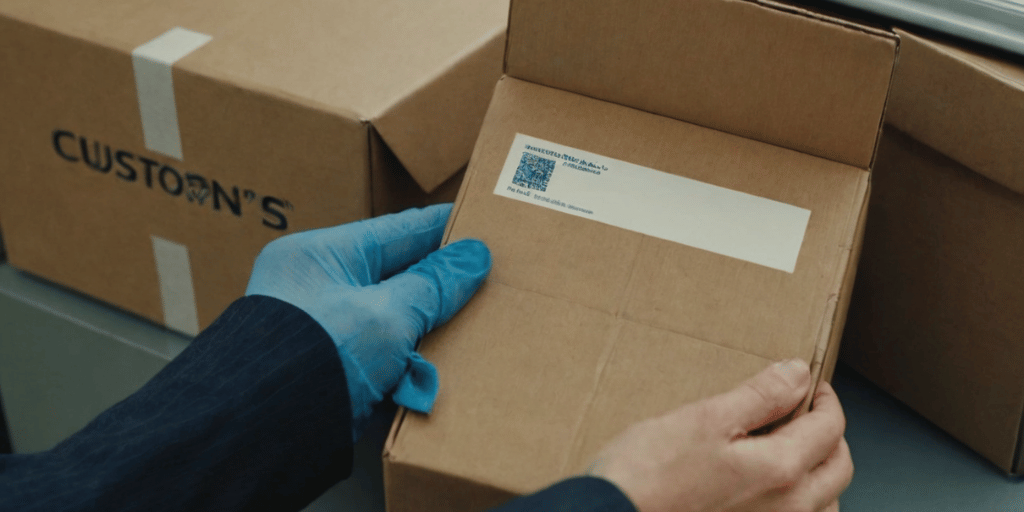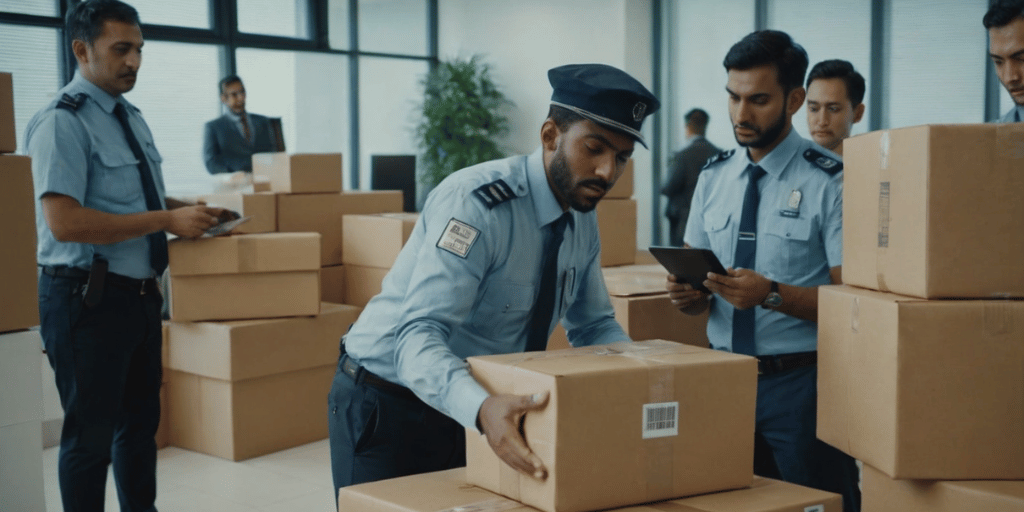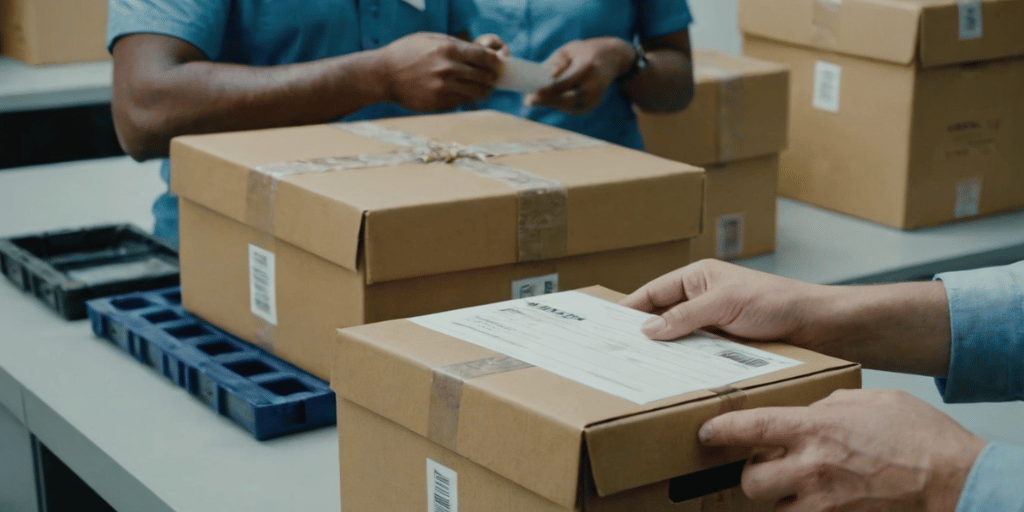When FedEx says “Parcel has cleared export customs,” it means the shipment got the green light after passing all checks and meeting rules where it started. The paperwork was all set and OK’d, so the package is ready to head to the next stop. This status is like a VIP pass making sure the parcel won’t get stuck, which matters most for people waiting on important deliveries or businesses tracking orders. Knowing this can save a lot of stress and gives a sneak peek into the big journey your package is on. Keep an eye out because the next update might bring some cool surprises about where your parcel lands next!
FedEx uses Electronic Trade Documents (ETD) to speed up this process. Clearance times can range from hours to several days, but services like EXPRESSCLEAR help ensure timely processing. Smooth customs clearance is crucial to avoid delays and keep shipment timelines on track.
For more details on managing and tracking your shipment with FedEx, further information is available.
Key Takeaways
- The parcel has successfully passed customs checks in the originating country.
- It’s now approved for international shipment.
- Customs officers have verified all required documentation and inspected the contents.
- The parcel is ready for transport to the destination country.
- No further export-related delays are anticipated.

What Does Parcel Has Cleared Export Customs FedEx Mean?
When a parcel has ‘cleared export customs’ with FedEx, it means the shipment has successfully passed through the customs clearance process in its country of origin and is now authorized to leave that country.
This step is crucial in international shipping, ensuring the goods comply with export regulations and are legally permitted to exit.
The export customs clearance involves several important steps focused on compliance and accuracy.
First, customs officers review all required documentation, including the commercial invoice, shipping label, and any other necessary forms. Accurate and complete documents are essential to avoid delays.
Next, customs authorities assess any applicable export duties and taxes based on the shipment’s value and type of goods. These financial obligations must be paid before the shipment can proceed.
Once all documentation is verified and duties or taxes are settled, customs authorities issue clearance, allowing the parcel to exit the country.
FedEx facilitates this process by offering customs brokerage services. Tools like the FedEx Electronic Trade Documents (ETD) system allow for electronic submission of customs paperwork, minimizing delays and ensuring smooth export customs clearance.
What is the Customs Clearance Process for FedEx Shipments?
Managing FedEx shipments for customs clearance involves key steps to ensure compliance with international trade regulations and smooth delivery.
1. Documentation Preparation:
Prepare essential documents like the Commercial Invoice and Air Waybill. These documents detail the shipment’s contents, value, and purpose. Depending on the shipping route, additional paperwork such as Certificates of Origin or Import Licenses may be necessary.
2. Electronic Submission:
Submit these documents electronically via FedEx’s Electronic Trade Documents (ETD) system. This expedites the process through pre-clearance and reduces potential delays. If electronic submission isn’t possible, manual submission of printed documents is required.
3. Customs Review:
Customs authorities review the documents for completeness and accuracy. They assess duties and taxes based on the shipment’s value and category, which must be paid before clearance is granted.
4. Shipment Transport:
Upon approval, FedEx moves the shipment from the bonded warehouse to its final destination.
5. Customs Brokerage Services:
FedEx offers customs brokerage services to navigate complex international shipping regulations. Their EXPRESSCLEAR system can clear up to 90% of shipments on the same day, ensuring timely delivery. Accurate documentation and pre-clearance are crucial to avoid delays.
Using FedEx’s tools and services, like ETD and EXPRESSCLEAR, enhances the efficiency and reliability of the customs clearance process, making international shipping smoother.
How Does FedEx Handle Customs Clearance?

FedEx guarantees that international shipments comply with customs regulations and avoid unnecessary delays through a meticulous customs clearance process.
This begins with thorough documentation preparation, including the Commercial Invoice, Air Waybill, and any additional certificates required for specific goods.
FedEx’s Electronic Trade Documents (ETD) system allows you to submit these documents electronically, expediting the process and reducing potential delays.
Customs officers then review the submitted documents for accuracy and completeness. This includes examining the shipment’s value and type of goods to assess duties and taxes. Any discrepancies can cause delays, so accuracy is crucial.
After a successful review, customs authorities issue clearance, allowing the shipment to proceed. FedEx then moves the shipment from the bonded warehouse to its final destination.
How long does FedEx customs clearance take?
FedEx customs clearance typically takes anywhere from a few hours to a few days. However, with the FedEx service, you can clear customs on the same day. However, several factors can impact this timeline.
Shipments needing additional regulatory processing or special clearance can extend the period to several days or even weeks.
Accurate and complete documentation is crucial; any discrepancies or missing information can cause significant delays. High shipment volumes or specific issues at customs may also lead to backlogs, affecting clearance times.
What Are Common Reasons for Customs Delays?

Common reasons for customs delays include incomplete documentation, regulatory compliance issues, and external conditions. Incomplete documentation is often the primary cause.
Errors like missing or incorrect details on customs invoices, commercial invoices, or bills of lading can significantly hinder the clearance process.
Essential information such as the shipper’s company letterhead, receiver’s tax ID number, and terms of sale must be accurately provided to avoid delays.
Customs inspections are another frequent cause. These inspections may be random or triggered by specific regulatory concerns.
They aim to verify shipment contents, check for contraband, or ensure compliance with local regulations. Such inspections can be time-consuming.
High shipment volumes during peak periods, such as holidays, can lead to backlogs and extend customs processing times. Geopolitical factors, including trade disputes, political unrest, and changes in government policies, can also affect customs clearance times.
Port congestion and labor issues, like strikes or shortages, further disrupt operations and exacerbate delays.
External factors, such as severe weather conditions and national holidays, can slow the processing and clearance of goods, impacting delivery timelines.
For instance, during the COVID-19 pandemic, increased safety protocols and reduced workforce availability led to significant delays in customs processing worldwide.
Similarly, during political unrest, additional security measures can slow down the clearance process, as seen during the Brexit transition period.
What Should I Do If My Parcel is Stuck in Customs?
If your FedEx parcel is stuck in customs, act quickly and thoughtfully to speed up the process and avoid delays.
Begin by checking the detailed tracking page on the FedEx website. This will give you specific information about the delay and any actions suggested by customs authorities.
Make sure all required documents are complete and accurate. This typically includes the commercial invoice and air waybill, but other paperwork like certificates of origin might be necessary. Incomplete or incorrect documents can lead to significant delays.
Contact FedEx customer service for help. They can offer guidance and escalate your issue if needed. Respond promptly to any requests for additional information from FedEx or customs authorities. This might include detailed descriptions of the shipment contents or regulatory documents.
Ensure all duties and taxes are paid, as shipments can be held until these fees are settled. Using FedEx’s Electronic Trade Documents (ETD) system to submit customs documents in advance can also make the process smoother.
How Can I Ensure a Smooth Customs Clearance Process?
To ensure a smooth customs clearance process for your FedEx parcel, follow these steps:
- Accurate Documentation: Provide detailed commercial invoices and air waybills. Use FedEx Ship Manager and Electronic Trade Documents (ETD) to submit these electronically, speeding up export customs clearance.
- Precise Descriptions and Valuations: Ensure consistency and detail in your documents. Accurate product descriptions and valuations help customs assess duties and taxes correctly.
- Compliance with Import Regulations: Research the destination country’s import rules to avoid potential issues. This can streamline the process.
- FedEx Global Trade Manager: Utilize this tool for insights into required documents and regulatory updates. It helps you stay prepared.
- Clear Communication: Include sender and recipient contact information to expedite any necessary clarifications.
- Pre-Pay Duties and Taxes: Consider Delivery Duty Paid (DDP) shipping options to pre-pay duties and taxes, avoiding delays related to unpaid fees.
- Customs Brokerage Services: Use FedEx’s customs brokerage services to navigate complex regulations. This can ensure efficient clearance.
How can I track the status of my parcel during customs clearance?

To track the status of your FedEx parcel during customs clearance, you can use several tools provided by FedEx for real-time updates and detailed insights.
FedEx Tracking: Enter your tracking number on the FedEx website to get real-time updates, including the status of your parcel in the customs process.
Track by Reference: If you don’t have a tracking number, use the reference number assigned by the shipper. This feature is particularly useful for managing multiple shipments.
If your parcel faces delays during customs, the detailed tracking page will specify the cause and suggest any required actions.
For direct support, FedEx customer service is available via phone, email, or chat, providing tailored assistance for customs-related inquiries.
Frequently Asked Questions
What Documents Are Required for International Shipping With Fedex?
For international shipping with FedEx, you’ll need a commercial invoice, an air waybill, an export declaration, and any necessary customs forms. Completing these documents accurately ensures smooth transit, timely delivery, and compliance with global trade regulations.
Required Documents:
- Commercial Invoice: This document details the transaction between the shipper and the recipient, including the value, description, and quantity of goods.
- Air Waybill (AWB): This is a contract between the shipper and the carrier, providing essential information about the shipment and serving as a receipt.
- Export Declaration: Depending on the value and type of goods, you might need to file an export declaration to comply with your country’s export control regulations.
- Customs Forms: Specific forms vary by destination country and type of goods being shipped. Examples include the Certificate of Origin and specific import permits.
Examples and Details:
- Commercial Invoice: Must include detailed descriptions, HS codes, and the total value of the goods. For instance, if you’re shipping electronics, specify each item’s make, model, and serial number.
- Air Waybill: Should be filled out with the shipper’s and receiver’s information, shipment details, and service level requested. For example, if you’re using FedEx International Priority, note that on the AWB.
- Export Declaration: In the U.S., this could be the Electronic Export Information (EEI) filed via the Automated Export System (AES) for goods valued over $2,500.
- Customs Forms: Include any necessary documents like import licenses or hazardous material declarations. If shipping to the EU, you might need to include an Economic Operator Registration and Identification (EORI) number.
Accurate and complete documentation is crucial to avoid delays and ensure compliance with international shipping regulations.
Can Fedex Help With Customs Duties and Taxes?
Yes, FedEx helps with customs duties and taxes. They offer services like customs brokerage, clearance support, and regulatory compliance guidance. These services make international shipping smoother and enhance global trade efficiency.
Does Fedex Offer Any Insurance for International Shipments?
Yes, FedEx provides insurance for international shipments through its Declared Value program. Shippers can declare a value for their packages, ensuring coverage up to that amount in cases of loss or damage.
Are There Any Prohibited Items for Fedex International Shipping?
Yes, FedEx prohibits certain items for international shipping. These include hazardous materials, perishable goods, and counterfeit products. Review FedEx’s guidelines to ensure compliance and avoid shipping disruptions.
Conclusion
‘Parcel has cleared export customs’ with FedEx means your shipment has successfully passed through the customs process in the country of origin and is now on its way to the destination country.
This status update is crucial as it signifies the completion of a major step in international shipping, ensuring that all necessary documentation has been reviewed and accepted by customs authorities.
Understanding the customs clearance process with FedEx is vital for timely deliveries. Handling documentation accurately and being aware of potential delays can prevent issues.
FedEx’s tracking tools provide real-time updates, enhancing transparency and customer satisfaction. By following best practices, businesses can streamline shipping, reduce financial risks, and maintain efficient international trade.

